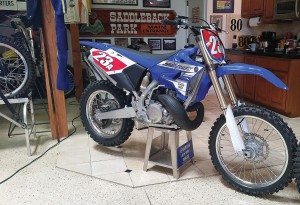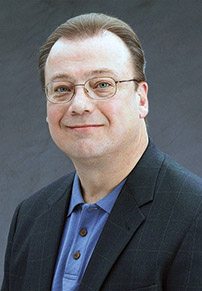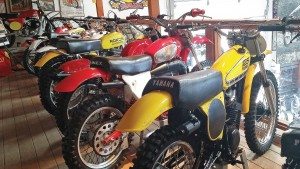Yamaha hits target with new models
Star Bolt, R-series and FZ-series hit the mark
Dennis McNeal, vice president of Motorcycle Operations for Yamaha Motor Corporation, U.S.A., was all smiles in late May. Not only had the OEM planned to unveil its new YZ250X, along with 2016 updates to other key models within the coming days, but it had also come off a solid first quarter.
“First quarter for YMUS from both the sales and financial aspect have been extremely good, ahead of target and very promising leading into the second quarter,” he explained.
Powersports Business managing editor Liz Keener sat down with McNeal at YMUS headquarters in Cypress, Calif., the day after the media reveal of the new models and caught up on the latest from the OEM.

PSB: Why has Yamaha been performing so well lately?
Dennis McNeal: A number of factors, some of those macroeconomic. One, the overall U.S. economy, while not as robust as even the government has forecasted, has been improving, especially when you look at it long term over the last five years, in areas such as unemployment, housing, fuel prices. Two, the industry as a whole is growing. Part of that’s economics, a lot of it’s demographics and a lot of it’s just new product offerings.
Specifically to Yamaha, we’ve been able to outpace the industry in growth this year significantly, and that’s directly attributed to three key factors. Obviously one, all the new product we’ve introduced in the past 24 months, kind of a redirecting of our marketing efforts, and, I think, a renewed optimism by dealers. That comes full circle to the overall economic improvements. It was such a downturn after the banking crisis of 2009 for a lot of OEs and especially dealers, who were looking for that turnaround or bottoming out. And it happened in certain segments even a couple years ago, but from a total industry aspect, I think more people are seeing that turnaround this year than in the past.
PSB: Which bike is the hot seller for Yamaha right now?
DM: It’s a real close race, no pun intended. So many of the bikes are doing so well and are so close. If you look at monthly sales, or fiscal year, even 12 months, it separates out because not all of the models have been on the market 12 months. But for [May], our new YZF-R3 would be at the top of the list, followed by the new YZF-R1 and then tied for third it’s very, very close between FZ-07, FZ-09 and the Bolt series.
PSB: How exciting is it to see new product like the FZ-07, FZ-09 and Bolt doing well?
DM: There was such a period of little, if any, new product, not just at Yamaha, but within the industry because of the recession. We’ve had an overabundance in almost every category from scooters to competition YZs, cruisers and sport. But the market’s reacted well where those bikes have been positioned, and not just by accident — a lot of what we’ve seen in the past, even though new bike sales decreased drastically after the banking crisis, used bike sales saw quite a bit of a volume, and that was more an economic issue, and then you had that period where there was really nothing new to attract buyers. Once the economy stabilized, there were new product offerings, and a lot of those people that have been in that used bike segment are coming back, and thankfully, they’re buying Yamaha models.

PSB: Has creating product that’s available in a lower MSRP tier been important?
DM: Yes, that is both not just an economic reality of today, that directly ties to where those customers were buying in the used segment. It’s also a demographic shift. But there are still two distinct segments — the high end is doing very well, and then that beginner, not entry-level so much, but re-entry in a lot of cases, is also doing very well.
PSB: Which demographic is Yamaha reaching best right now? Has Yamaha’s key demographic changed?
DM: Obviously baby boomers still make up a majority of riders statistically. I think 2014 was the tipping point where gen X, gen Y, millennials outnumbered baby boomers, and we’re starting to see that, if not statistically, anecdotally at the dealer level, at consumer rallies, and I see it on the street. Younger, more female, which is good.
PSB: I know one of the demographic concerns for the industry is that too many baby boomers are getting too old for riding, and that’s still the primary demographic.
DM: It’s a concern for the automobile industry; it’s a concern for many industries — what are the younger generations’ life choices going to be, especially as those differences are more pronounced because of technology and the influences they grow up with.
PSB: What is Yamaha doing to reach out to that younger demographic to make sure that if they choose to be in powersports, they choose Yamaha?
DM: A number of things on the business side. Three areas of focus have been social media; infrastructure, what we call CRM — customer relationship management — which is technology-driven; and our R&D capabilities, to be able to provide the product that they want. From a marketing standpoint, it follows very similar — we’re doing more online with new digital initiatives and with social media, more promotions outside the normal channels of motorsports. Because we have race teams and such a huge investment in that marketing effort, it’s very easy for us to go to the races. But we started actually two years ago — this will be our third year — going to non-motorcycle events, lifestyles as diverse as food festivals, music festivals, some other motorsports, such as NASCAR, the Palm Beach Grand Prix, and the return has been phenomenal, both for brand exposure, but also on a sales basis. One of the benefits of new technologies is we can measure exactly the return as opposed to maybe some of the older media, such as television, by directing people to website landing pages and then watching how they interact with our social media sites, our websites and do they buy. And the good news is, many of them are buying.
We have mentioned some of the marketing efforts with the lifestyle trucks. When we started actually with the Bolt, the year we introduced that, we segued one of those trucks to Yamaha sport. This year it’s featuring the R3. And then last year we actually sponsored a music concert tour called Uproar. It featured a number of bands in about 30-plus cities coast to coast, and again, being able to measure with name collection how those people interacted with our brand and if they bought, it was very beneficial to our dealers and our brand with that involvement.
PSB: How is your dealer network right now?
DM: The dealer network overall is very stable. They’re benefitting not just from a lot of the new models and the increase in volume, but with the used sales and accessory parts business.
PSB: One of Yamaha’s recent big announcements was the launch of Yamaha Motor Finance. Why launch that, and how important will that be for sales?
DM: We’ve got a very strong relationship existing today with both Capital One and Synchrony Financial … but the new initiative really does fill a niche for younger, less credit established buyers, or even people returning to a higher credit score that our current partners weren’t serving. It’s a good way for dealers to be able to attract new buyers, younger buyers and expand sales.
PSB: What drove this initiative? Were dealers asking for it?
DM: One of the top three requests from dealers is more credit approvals, and that’s just a fundamental of our business. A lot of promotions tend to focus on a lot of premiums, extended warranties, different rebates, different incentives, and what we always hear from the dealers is we don’t need to give more incentives; we need to approve more of the people that want to buy.
PSB: How have credit approvals been, both with Yamaha Motor Finance and with your other retail financing partners?
DM: The current partners do a wonderful job. It’s really an integral part of our business that really didn’t even exist 20 years ago.
The new business has been a planned rollout. It’s actually only been on the market for three months. We started as a test with only six dealers, expanded to 60. We just went to
12 states at the beginning of April, so we’re looking toward the next rollout of additional states scheduled for the beginning of August. And it’s a learning process.
PSB: Yamaha also recently announced a partnership with HJC to design R1 helmets. What went into that partnership?
DM: There’s been a long relationship through a number of different avenues; the most obvious is Factory MotoGP rider Jorge Lorenzo and his relationship with HJC. But I think the combination of technologies, design, price points and the brands themselves are really a perfect integration of what customers are looking for. Right now it started off primarily focused on the R series — R1, R6, R3 — and some marriage of that racing relationship with Jorge’s partnership with HJC. But the initial reaction has been very good, and I think you’ll see this already taking root in some other branding integrations, such as the Yoshimura exhaust systems for R1, R3 and some additional co-branding in the future.
PSB: How important is it for OEMs to work with other partners on projects like this?
DM: In today’s global market, it’s a necessity. It’s not only, as I mentioned, the strength of the brands, but the technological development and the design integration. It’s much more coordinated if it starts at inception, before the fact as opposed to after the fact. And a lot of customers are looking for those premium brands to support their lifestyle. It benefits the dealers because they can integrate multiple business points under one brand positioning.
PSB: How has the new P&A e-commerce site been doing since its December launch?

DM: So far, so good. Again, another new initiative, we’re just finishing up our fifth month. I’m happy to say a majority of dealers have signed up to support the program, and year-over-year apparel sales are up 20 percent as a direct result of this new capability.
PSB: How does the P&A e-commerce program work once a dealer signs up?
DM: The dealer has a short list of requirements, basically enrolling to support the system. Basically through our online servers and technologies, the customers can purchase product and assign a dealer to be the delivering dealer; from a financial standpoint, the dealer gets the benefit of the profit margin, albeit as a reduced level, with none of the risk of stocking the inventory and creating the sales. And I’m already starting to see dealers integrate that into their business by adding tablets to the accessory showroom and letting customers literally order accessories off our website from their showroom to ensure that they get the integrated profit from that sale. It’s pretty sharp thinking.
If you look at the whole technology, Internet business model, it’s not something that we’re inventing; we’re just catching up to where the culture is today and customers’ expectations. But it does make sense with the wide variety of products when you look at Yamaha’s breadth and depth from scooters to off-road to sport bike to cruisers to RV to water vehicle to marine to snowmobile to power products, to be able to present and market those products is a big enough challenge. The accessories that support those, the working capital that a dealer would need to invest in to utilize the technology and still be able to fill that customer’s need, it’s usually a quicker turnaround shipping it directly to their home.
PSB: Why is Yamaha returning to AIMExpo again this year?
DM: It’s proven to be a great platform, not just from one aspect, especially the media, the dealer integration and then the consumer integration. And the timing, as a global company, we really work hand-in-hand with other markets — Europe, Canada, Australia, Japan, what we call developed markets — and the timing has coincidentally really supported our efforts on a global basis, so we’ve been able to introduce a number of models at AIMExpo literally for the world.
PSB: How do you think this year’s motorcycle season is going to be for Yamaha?
DM: At this point we’ve finished out June, but we’ve got forecasts through the first half of the year through June, and we’re right on target from where we’d expect to be from a sales standpoint, which was fairly aggressive, and the plan was to exceed the growth of the industry, obviously from all of the new models that we’ve introduced that are now available for dealers and customers.
I think people will be surprised how much more we’re going to bring to market this year and in the future. Because we’ve introduced so much product, by the time this reaches publication, the dealers and the public will have seen our June introductions and a number of new models from both the RV and the motorcycle group in the off-road area, and then we’ll finish up the end of this year with street bike introductions. And the future’s exciting.








